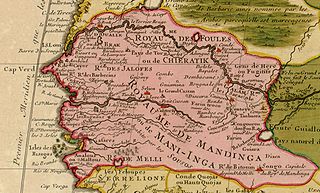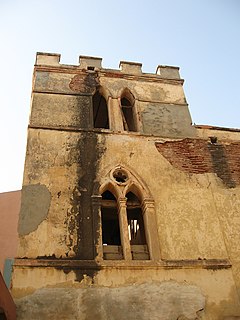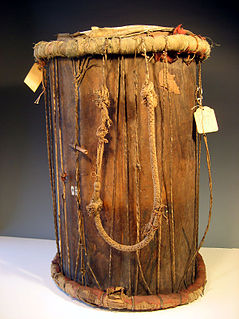
The history of Senegal is commonly divided into a number of periods, encompassing the prehistoric era, the precolonial period, colonialism, and the contemporary era.

Saint Louis or Saint-Louis, known to locals as Ndar, is the capital of Senegal's Saint-Louis Region. Located in the northwest of Senegal, near the mouth of the Senegal River, and 320 km north of Senegal's capital city Dakar, it has a population officially estimated at 258,592 in 2021. Saint-Louis was the capital of the French colony of Senegal from 1673 until 1902 and French West Africa from 1895 until 1902, when the capital was moved to Dakar. From 1920 to 1957, it also served as the capital of the neighboring colony of Mauritania.

Louis Léon César Faidherbe was a French general and colonial administrator. He created the Senegalese Tirailleurs when he was governor of Senegal.
The Four Communes of Senegal were the four oldest colonial towns in French West Africa. In 1848 the Second Republic extended the rights of full French citizenship to the inhabitants of Saint-Louis, Dakar, Gorée, and Rufisque. While those who were born in these towns could technically enjoy all the rights of native French citizens, substantial legal and social barriers prevented the full exercise of these rights, especially by those seen by authorities as "full-blooded" Africans. Most of the African population of these towns were termed originaires: those Africans born into the commune, but who retained recourse to African and/or Islamic law. Those few Africans from the four communes who were able to pursue higher education and were willing to renounce their legal protections could "rise" to become termed Évolués (Evolved) and were nominally granted full French citizenship. Despite this legal framework, Évolués still faced substantial discrimination in Africa and the Metropole alike.

École William Ponty was a government teachers' college in what is now Senegal. The school is now in Kolda, Senegal, where it is currently known as École de formation d’instituteurs William Ponty. It is associated with the French university IUFM at Livry-Gargan (France).

Rivières du Sud was a French colonial division in West Africa, roughly corresponding to modern coastal sections of Guinea. While the designation was used from the 18th to 20th century, the administrative division only existed from 1882-1891.

Maurel & Prom is an oil company specialising in the production of hydrocarbons. It is listed on Euronext Paris and has its registered office in Paris.
The Archives Nationales du Sénégal is headquartered in Dakar, in the "Central Park" building on Avenue Malick Sy. It was first called "Archives Nationales" in 1962, but the collection existed since 1913 as the archives of the colonial French West Africa administration. It moved from Saint-Louis to Dakar after 1958.

Eugène Abdon Mage was a French naval officer and explorer of Africa. Mage published the first detailed description of the Toucouleur Empire created by El Hadj Umar Tall.
The French conquest of Senegal started in 1659 with the establishment of Saint-Louis, Senegal, followed by the French capture of the island of Gorée from the Dutch in 1677, but would only become a full-scale campaign in the 19th century.

The Battle of Logandème was an uprising led by the Serer King Maad a Sinig Kumba Ndoffene Famak Joof, king of Sine, against the French Empire. The battle took place at Logandème which was a part of Sine at the time. The battle was also a revenge attack against the Serer people after their resounding victory against France at the Battle of Djilass on 13 May 1859. It was the first time that France decided to employ cannonball in the Senegambia.
The following is a timeline of the history of the city of Dakar, Senegal.
The following is a timeline of the history of the city of Bamako, Mali.
The following is a timeline of the history of the city of Libreville, Gabon.
The following is a timeline of the history of the city of Bangui, Central African Republic.
The following is a timeline of the history of the city of Yaoundé, Cameroon.
The following is a timeline of the history of the city of Brazzaville, Republic of the Congo.













